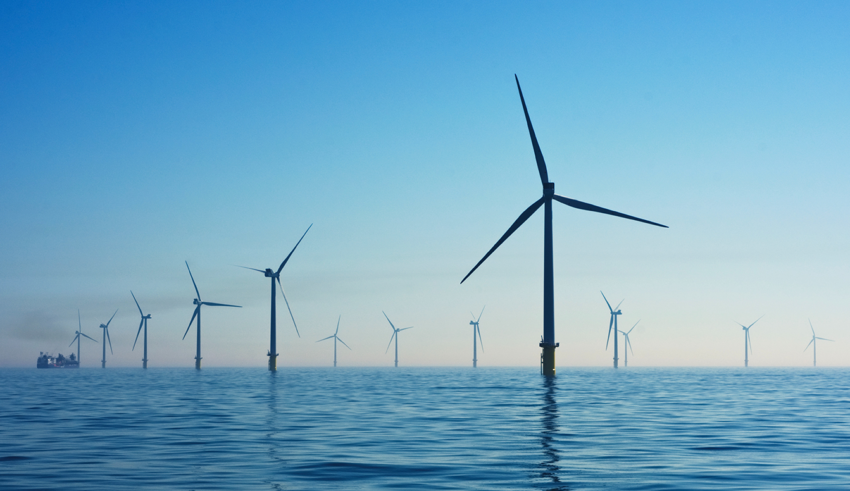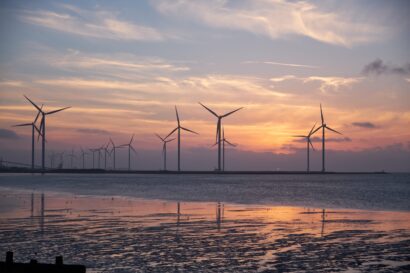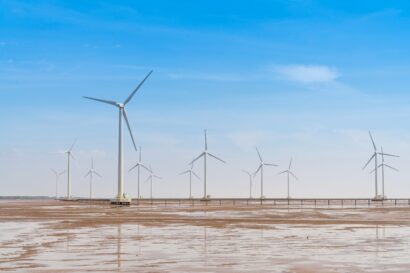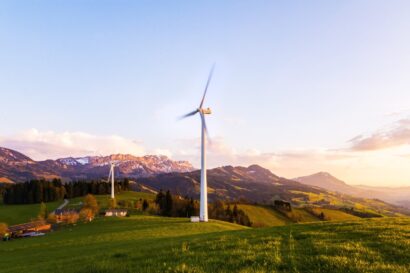AG INSIGHT | 19/09/2017
The low carbon economy is taking off

Recent developments in the offshore wind and car manufacturing industries show that the low carbon economy is well and truly taking off. Clear policy direction, stable investment mechanisms and joined up policy making will be essential to allow the private sector to keep on innovating and slash the cost of low carbon technologies argues Nick Molho, Executive Director at the Aldersgate Group
Recent announcements in the offshore wind and car manufacturing industries have given another welcome boost to the low carbon economy. On September 11th 2017, UK government auction results showed that the next round of offshore wind projects in the UK will receive a strike price of between £57.50 to £74.50 /MWh, with the lowest price being some 50% below the lowest price of projects awarded in the last auction in 2015.
This announcement took place shortly after BMW and Jaguar Land Rover announced a major shift towards developing a much wider range of electric and hybrid cars in the near future, with Jaguar’s all-electric I Pace and BMW’s first all-electric Mini expected in 2018 and 2019 respectively. This comes after Volvo committed earlier this summer that all its new models would have an electric motor from 2019. The supply chain impacts can be felt in several countries such as the UK, where low emission vehicles already represented £2.4bn worth of exports in 2015.
What lies behind the momentum?
Despite some periods of uncertainty, the UK’s offshore wind industry has on the whole benefitted from clear policy direction. The UK’s carbon budgets and the EU’s renewable energy targets have combined with a reliable investment mechanism in the form of competitive auctions for Contracts for Differences (CfDs). This has helped project developers go ahead with bigger projects and incentivised the industry to invest in larger and more efficient wind turbines, which have delivered rapid cost reductions and grown the supply chain in areas such as the Isle of Wight and Hull.
The same can be said for low-emission vehicles despite some of the policy flaws highlighted by the Volkswagen scandal. The clear policy direction provided by the EU’s gradually tightening vehicle emission standards, combined with supportive national policies on research and development, consumer grants and charging points have helped contribute to increased innovation in low-emission vehicles, cost reductions and a growing supply chain.
Be clear what you want do and stick to it
These recent developments hold some valuable lessons for policy makers globally and for the UK government’s upcoming clean growth strategy in particular.
First and foremost, setting a clear policy direction and sticking to it is essential to get the private sector to invest in innovation and deployment of low carbon technologies, cut their cost and grow supply chains. The importance of governments generating positive headlines on their commitment to the low carbon agenda is often overlooked but it really does have an impact on investors’ confidence, their perception of risk and in determining the scale of investments they are ready to make.
Second, providing businesses with a clear investment mechanism is essential. Whilst financial support remains important to support some technologies to go down the cost curve, what businesses increasingly need more than anything is to understand under what conditions they can invest in new projects and how these conditions might evolve in the future.
In the case of UK offshore wind projects, which can take 8 to 10 years to build, this means the UK government should deliver on its commitment to run auctions for £730m worth of projects by 2020 and ensure a mechanism is in place to support investment in a pipeline of projects in the 2020s. In the case of onshore wind, it means providing an investment mechanism for a sector that currently has no route to market and cannot build new projects despite a strong business case for doing so in areas such as Scotland. For the built environment, where improving energy efficiency has become an urgent priority, it means developing clear energy efficiency standards for new and existing buildings, coupled with well-timed incentives to stimulate investment in energy saving measures.
Third, co-ordination across different government departments increases the chances of policy success. What is telling about policies in the UK’s offshore wind and low emission vehicle sectors is that government recognised fairly early on the potential supply chain growth and industrial strategy benefits that investment in both sectors could bring to the UK economy. This may explain why these policies have been somewhat more successful and stable than in other parts of the low carbon economy.
Going forward, following a similar approach for energy efficiency, which can deliver a wide range of benefits such as improved health, lower energy bills, better energy security and a growing insulation supply chain, will be essential. A co-ordinated approach to transport and energy policy will also be important to ensure that a rising fleet of electric vehicles can successfully co-exist with a flexible and low-carbon power grid.
With continued innovation, cost reductions and supply chain growth in the UK and beyond, it is clear that the low carbon economy has well and truly taken off. Policy makers must now harness that growth by providing a stable investment climate for businesses and supporting innovation in the critical low-carbon technologies of tomorrow such as power storage and low carbon heat.



